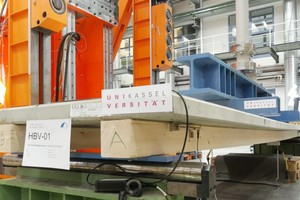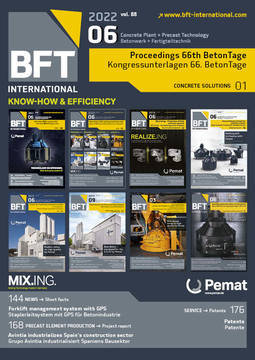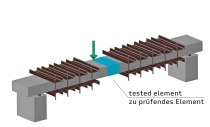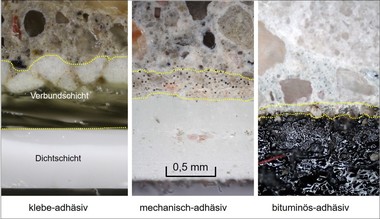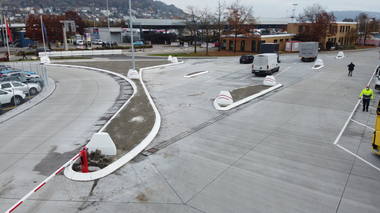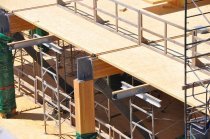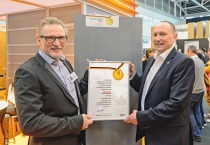Innovative prefabricated timber-concrete composite
elements with adhesive bond
Adhesively bonded timber-concrete composite structures open up a wide range of new opportunities with respect to achieving a high degree
of prefabrication while ensuring efficient and resource-saving
material consumption and optimizing the construction process. Such hybrid load-bearing structures favorably combine the two materials in order to fully utilize their properties since concrete is predominantly subject to compression while wood primarily absorbs bending moments and tensile forces. In new buildings, using precast reinforced-concrete components is associated with a number of advantages compared to cast-in-place concrete because the high degree of prefabrication common in timber construction can be maintained while making full use of the benefits of concrete.
In a current research project, viscous polymer-modified mortars containing a thixotropic agent were found to be particularly suitable
for creating an adhesive bond because their rheological character-
istics compensate for the production-related unevenness of the precast concrete surface while developing sufficiently high adhesive forces and thus creating a full adhesive bond. Comparing different
surface textures (smooth formed finish, sandblasted, bush-hammered,
exposed-aggregate) revealed only a negligible correlation between
the bond strength and the type of concrete surface. It was also found that precast elements of strength class C45/55 (CEM-52.5R, maximum aggregate size 16 mm) with a smooth formed finish are capable of transferring bond stresses in the range of the shear strength of the timber.
This performance eliminates the need for a relatively comprehensive post-treatment to prepare the surface for application
of the adhesive while also saving costs. However, achieving a durable
adhesive bond essentially requires the contact surface to be free of release agent residues.
The research currently being conducted at the University of Kassel
concentrates on testing reliable and cost-efficient production processes
as well as developing methods for verifying the durability of the adhesive bond.

